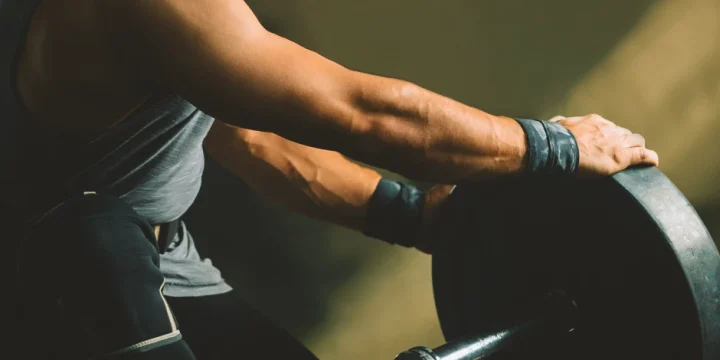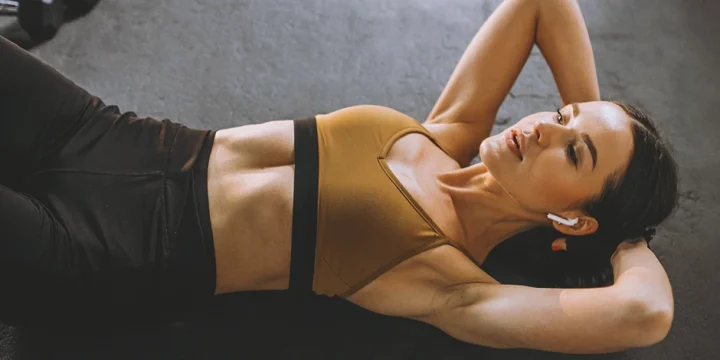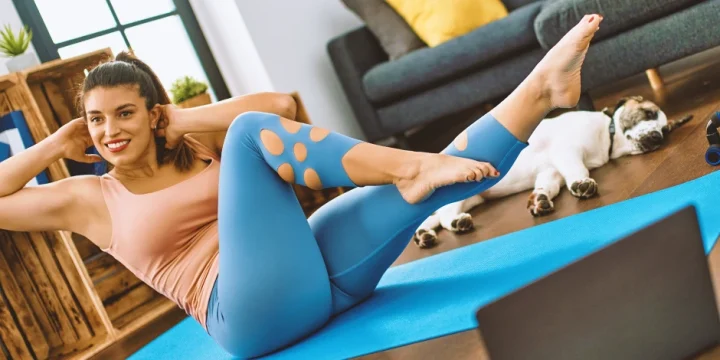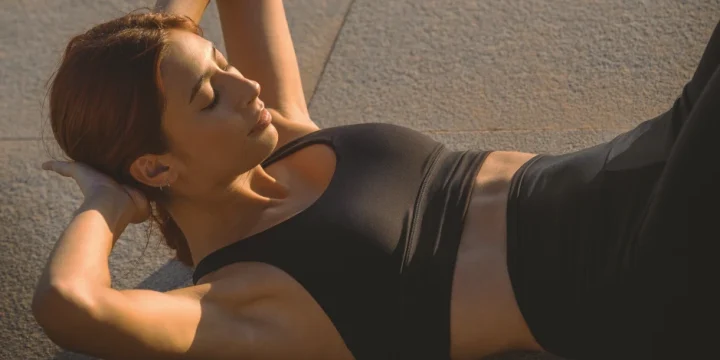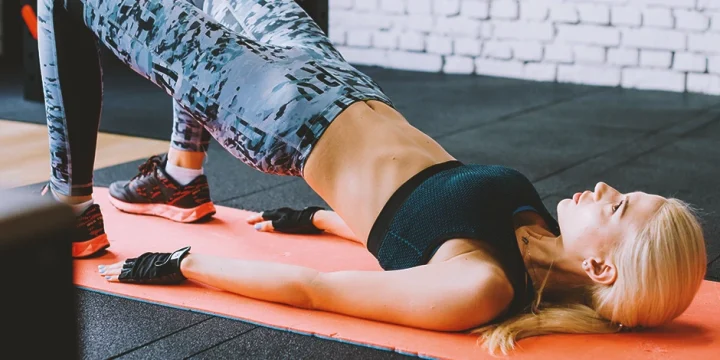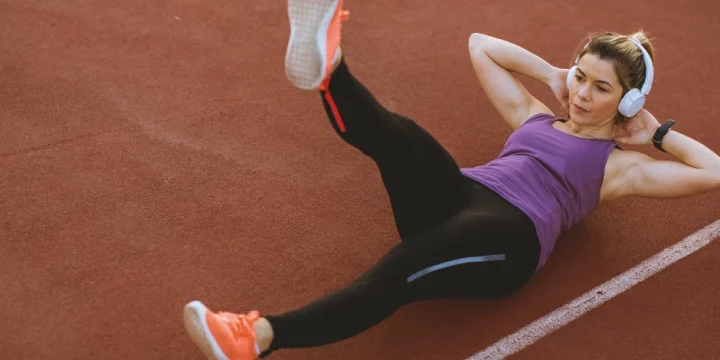Building a stronger core does not require access to much equipment.
The goal is to make sure you choose the most productive core exercises and execute them correctly.
As a certified fitness trainer with over eight years of experience, I've used many core exercises to train my clients to achieve a strong core required for other movements in and out of the gym.
In this piece, I will detail my research on core anatomy, expertise on the best core exercises, how to perform them with proper form, and their benefits.
Quick Summary
- To build a stronger core at home, focus on productive exercises like Dead Bug, Russian Twists, and Bicycle Crunch, performed with proper form.
- Detailed instructions for core exercises ensure effective engagement of key muscle groups, maximizing workout benefits.
- A study in the Journal of Physical Therapy Science links strong core muscles to improved posture, highlighting the health benefits beyond physical appearance.
- In my experience as a fitness trainer, a consistent core workout routine is key to enhancing overall body strength and stability.
The Best At-Home Core Exercises

Dead Bug
Dead bug engage the rectus abdominis and the transverse, internal, and external obliques, as well as the erector spinae muscles.
How to perform:
- Lie on your back with your legs and arms in the air and your knees bent to an angle of 90°.
- While keeping your lower back in contact with the floor, steadily extend your right arm upwards and your left leg forward till the heel is a few inches above the surface.
- Avoid arching the lower back by engaging your entire core. Pause, return to the starting position, switch sides, and repeat.
- Perform 15 repetitions on each side for a total of 30 overall.
- Rest and repeat for sets.
Russian Twists
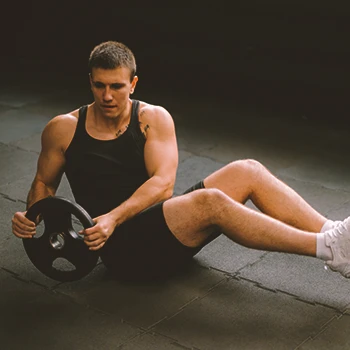
It works your hip flexors, transverse abdominis, rectus abdominis, external and internal obliques, erector spinae muscles, latissimus dorsi, and scapular muscles.
How to perform a Russian twist:
- Begin in a seated position, knees bent.
- Lean back slightly, forming a V with your torso and thighs, and engage your core to maintain your back, shoulders, and head raised.
- Cross your ankles and lift your legs off the ground.
- As you balance, rotate your body from side to side with your obliques. Maintain as much stillness as possible in your legs.
- Repeat 15 repetitions on each side for a total of 30 reps.
- Rest and repeat for sets.
Bicycle Crunch
It works your external and internal obliques, hip flexors, and rectus abdominis (especially the lower abdominals).
How to perform a bicycle crunch:
- Lie on your back and extend your legs straight out before you. Put your fingers behind the head and interlace them.
- Lift your shoulder blades off the ground and draw your left knee toward the chest.
- Crunch up and slightly rotate as you bring the right elbow near your left knee.
- Maintain a relaxed hold behind your head and avoid pulling on your neck. Repeat on the other side.
- Complete 10 repetitions on each leg for a total of 20 total reps.
- Rest and repeat for sets.
Bird Dog

Exercises your erector spinae (which aids spinal stability), rectus abdominis, and glutes.
How to perform a bird dog:
- Begin on all fours, with your knees hip-width apart and your hands beneath your shoulders.
- Extend your right arm forward while bringing the left leg back until it is straight.
- Maintain a straight line between your extended leg and arm and your body while keeping your hips square to the floor.
- Keep your lower back from bending by engaging your core.
- Pause for a moment, return to the starting position, switch sides, and repeat.
- Complete 10 repetitions on each leg for a total of 20 reps.
- Rest and repeat for sets.
Spiderman Press-up
It is designed to involve your core, so while it targets your triceps and chest like a traditional press-up, your core and other abdominal muscles need to work more to maintain stability.
How to perform:
- Start in a high plank posture, with your core tight and your shoulders away from the ears.
- Lower yourself to the floor while bringing your left knee to your left elbow.
- Squeeze the obliques while keeping the knee off the ground.
- Press back to the high-plank position as you return the left leg to the starting position.
- Repeat on the other side.
Superman
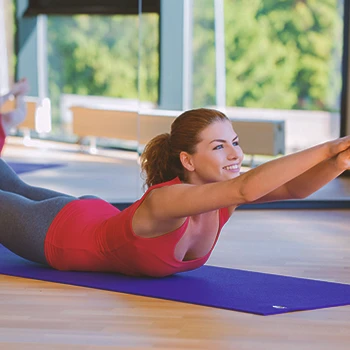
The Superman workout benefits people of all fitness levels since it targets the lower back, hamstrings, and glutes.
It also complements other core exercises that primarily target the abs.
How to perform:
- Lie facedown on the ground, with your legs extended and your arms outstretched before you.
- Maintaining a neutral head position (avoid looking up), slowly elevate your left arm and right leg a few inches off the ground or until you notice your lower back muscles tense.
- Engage your glutes, core, and the muscle groups between the shoulder blades simultaneously.
- Raise your abdomen slightly off the ground to compress your abs.
- Maintain this posture for a few seconds. Make sure you're breathing throughout.
- Return your left arm, right leg, and belly to the starting position.
- Repeat the movement with your right arm and left leg.
Heel Taps
The heel taps work your external and internal obliques and rectus abdominis.
How to perform:
- Lie on your back, legs bent, feet flat on the floor, a few inches from your buttocks.
- Crunch up with your core, lifting your shoulder blades off the ground. Extend your arms forward from each side of your legs. Rotate from side to side with the obliques, softly hitting the outside of your heel with your palms.
- Perform 15 repetitions on each side for a total of 30 reps.
- Rest and repeat for sets.
Glute Bridge

How to perform glute bridge:
- Lie on your back, knees bent, and feet flat on the floor.
- Your legs should be hip-width apart, your toes pointed forward, and your heels a few inches away from the glutes.
- Place your arms at your sides, palms facing up towards the ceiling.
- Squeeze your abs and glutes as you push your hips toward the sky.
- Lift your hips as far as you can without bending your back.
- Squeeze your glutes in the highest position for two seconds as tightly as possible.
- Lower the hips slowly to the starting position, maintaining tension in the abs and glutes.
- Repeat for the desired number of reps.
Plank to Downward Dog Taps
Engages your glutes, transverse and rectus abdominis, internal and external obliques, hamstrings, and scapular muscles.
How to perform:
- Begin on all fours with both feet hip-width apart in a push-up position.
- Lift your buttocks up and backward, straightening your feet to a downward dog.
- Extend the left arm toward the right leg simultaneously, stretching back as far as possible.
- Return to a push-up posture and repeat the downward dog movement. This time, reach back as far as possible with your right hand toward your left foot.
- Complete 10 repetitions on each leg for a total of 20 reps.
- Rest and repeat for sets.
Side Plank With Rotation
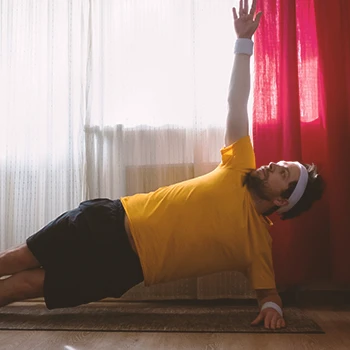
It engages your glutes, transverse abdominis, scapular muscles, rectus abdominis, lats, and internal and external obliques.
How to perform a side plank with rotation:
- Begin in a side plank, with the left shoulder over your left elbow, with the left shoulder supporting the upper body, and your feet spread out, legs stacked on each other.
- Maintain this posture and raise your left arm to the ceiling.
- Twist your body forward and stretch your arm behind you, threading it beneath your body. Return to your starting position.
- Complete 10 repetitions on each side for a total of 20 overall.
- Rest and repeat for sets.
Oblique Crunch
How to perform oblique crunches:
- Lie on your back, legs bent, and flat on the ground.
- Place your right arm behind the head, elbow out, and left palm down parallel to your chest.
- Contract your abs and twist your torso to draw the right elbow closer to your left knee.
- Lower slowly and repeat all repetitions before switching sides.
Read More: Planks vs Crunches: Muscles Worked & Which is Best
Supine Toe Tap
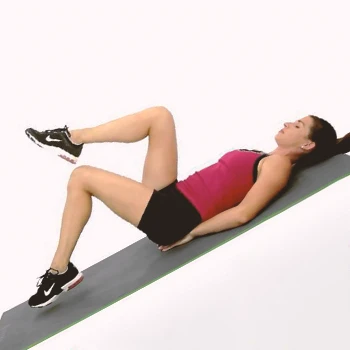
How to perform supine toe taps:
- Begin on your back. Raise your legs; bend your knees at 90 degrees. Place both hands, palms down, at your sides.
- Tighten your abs. Lower the right foot to the floor and lightly tap it, maintaining your left leg steady and your back flat.
- Return to the beginning position by raising your right leg.
- Repeat with your other leg.
Mountain Climber
How to perform mountain climber exercise:
- Begin in a plank position with both hands below the shoulders. Tighten your abs.
- Raise the right knee to your chest while keeping your back neutral and your hips down.
- Return the right leg to the beginning position while raising your left knee to your chest.
- Continue alternating legs for the desired number of times.
Leg Lifts

How to perform:
- Lie on your back and extend your legs straight out before you.
- Place your palms down just behind your buttocks or beside you.
- Raise your feet off the floor.
- Keep your lower back on the ground by engaging your core.
- As you pull up, draw your navel in. Lower yourself slowly to the ground and repeat for reps.
The Core Anatomy

From my experience as a health and performance coach, I've learned that the abdominal muscles are crucial for stabilization and movement.
However, your core's not just about abs. It's a team of muscles, including:
- Obliques: Side muscles for twisting and bending [1].
- Transverse Abdominals: Deep muscles for spine flexibility and strength, says the International Journal of Sports Physical Therapy [2].
- Abs: The "6-pack" area, controlling spine flexing and torso extension [3].
- Erectors: Back muscles keep you upright, preventing slouching, as per the Journal of Physiology [4].
- Multifidus: Spine-supporting muscles from the pelvis to the head [5].
- Pelvic Floor Muscles: Supporting your bladder and bowels, notes Gastroenterology Clinics of North America [6].
- Diaphragm: Vital for breathing and separating abdominal and thoracic cavities [7].
Related: Best Core Exercises for Men & Women
The Benefits

Boosts Posture
A strong core equals better posture, reducing neck and back pain from desk jobs, as found in the Journal of Physical Therapy Science [8].
"Working at a desk for lengthy periods, regardless of your exercise level outside of work, might have a negative influence on your core strength."
- Dale Santiago, Certified Personal Trainer
Ups Stability
A sturdy torso means better balance in daily life and workouts. Core training's impact on balance is spotlighted in the Journal of Sports Sciences [9].
Enhances Balance
Core strength keeps you steady, even on uneven ground.
Strengthens Overall
From my training sessions, I've noticed that a robust torso is key to maintaining balance in any activity.
A strong core underpins your entire body's strength, which is crucial for lifting heavier weights, according to the International Journal of Environmental Research and Public Health [10].
Shields Organs
Your core muscles guard vital organs like the kidneys and liver against external impacts.
"Organs are an important component of how your body works and a strong core may help maintain some of them safe."
- Laura Pachnos, Certified Personal Trainer
Aids Weight Management
Core workouts can rev up your metabolism and muscle mass, helping with weight control, says the Mayo Clinic [11].
Consistency is essential; therefore, incorporate the above-mentioned core exercises with these strong pre-workout supplements into your routine.
FAQs
How Can I Strengthen My Core at Home?
You can strengthen your core at home by performing exercises that target your core muscles, such as plank taps, bicycle crunches, lateral plank walks, and supermans.
Is a 15-Minute Core Workout Enough?
Yes, a 15-minute core workout is enough. You should choose the best core activities, set a timer to 15 minutes and perform them in the required intervals.
Do Planks Give You Abs?
Yes, planks may give you abs as the exercise targets many abdominal muscles. Plank is among the most calorie-burning and healthy workouts. They also work by improving your posture, flexibility, and abdominal tightness.
References:
- https://www.ncbi.nlm.nih.gov/books/NBK545253/
- https://www.ncbi.nlm.nih.gov/pmc/articles/PMC5717480/
- https://www.ncbi.nlm.nih.gov/books/NBK551649/
- https://www.ncbi.nlm.nih.gov/pmc/articles/PMC1365926/
- https://www.ncbi.nlm.nih.gov/pmc/articles/PMC5677570/
- https://www.ncbi.nlm.nih.gov/pmc/articles/PMC2617789/
- https://www.ncbi.nlm.nih.gov/books/NBK519558/
- https://www.ncbi.nlm.nih.gov/pmc/articles/PMC6110226/
- https://pubmed.ncbi.nlm.nih.gov/32560185/
- https://pubmed.ncbi.nlm.nih.gov/35976032/
- https://www.mayoclinic.org/healthy-lifestyle/fitness/in-depth/core-exercises/art-20044751
About The Author
You May Also Like
